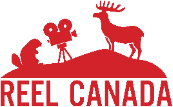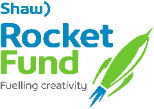Glossary
This Glossary is intended to be a living document. The philosophy behind the glossary is that Inclusion, Diversity, Equity, Accessibility and Decolonization terms are evolving and that often there is no consensus within communities on which term to use. As such, where there are different terms in use we have provided context to allow the reader to understand the issues to help them determine which term they choose to use. We are also not advocating for specific definitions as many, equally valid, definitions are in use. We welcome revisions, updates and new terms that would help to improve understanding.
A good rule of thumb when dealing with individuals is to ask how they would like to be identified. Their preferred term could be one you are not familiar with and that can open a conversation.
If you have a term that you would like added to it or a suggestion for a revision, please fill out the form. The Being Seen research team will review the submission, make revisions if necessary and update the Glossary.
Black/African American/African Canadian/Afro Descendant
The term African American was developed in the United States to refer to people who were descended from enslaved Africans. For a time African Canadian was adopted for the same reason. However, with increasing immigration from Africa and other countries where there would be no connection with the term African American, usage shifted to Black as a more universal term. Afro Descendant is a term that is used often within the United Nations organizations and is the preferred term in Quebec. Keep in mind that as with other universal terms, people identify with a specific community so may prefer to be known as Jamaican-Canadian or Black Nova Scotian, for example.
Diverse
A group of people can be diverse. A person cannot be diverse. Diverse refers to the composition of a group and is not a synonym for marginalized or racialized or any of the other umbrella terms for not the established mainstream. A diverse group can and should include people who are white, straight and able-bodied.
DEI/DEID/DEIB/IDEA/JEDI/JEDDI
There are many terms being used as acronyms to describe the diversity and equity space. It is intended as an umbrella term to refer to anti-racism, anti-oppression and equity programs, recruitment, training and assessment for organizations. DEI is often used as a short form but all have their proponents.
DEI – Diversity, Equity, Inclusion
DEID – Diversity, Equity, Inclusion, Decolonization
DEIB – Diversity, Equity, Inclusion, Belonging
IDEA – Inclusion, Diversity, Equity and Accessibility
JEDI – Justice, Equity, Diversity and Inclusion
JEDDI – Justice, Equity, Diversity, Decolonization and Inclusion
Intersectionality
Intersectionality is a term first coined by Kimberlé Williams Crenshaw, but based on previous scholarship, to refer to an integrated analysis of oppression that included factors such as gender, race, sexual orientation, disability, physical appearance and class. It is more than just identifying different identities that a person might hold (e.g., Black, Queer and with a Disability) but goes beyond to encouraging an understanding of how those intersecting identities will shape that person’s experiences and how interventions need to be aware of the impact of those intersecting identities.
Indigenous/First Nations/Métis/Inuit
Indigenous is the preferred umbrella term to refer to all First Nations, Métis and Inuit. Older legislation or organizations (such as APTN) may still use the older term Aboriginal, which is defined in the Constitution to mean First Nations, Métis and Inuit. The Indigenous Screen Office defines First Nations, Métis and Inuit as follows in the Addendum to Building Trust and Accountability Report (November 2022):
- First Nations: are status and non-status individuals who are citizens, recognized members or direct blood relatives of a self-governing band, a reserve-based community, or a larger tribal group.
- Inuit: are recognized as the First Peoples of the arctic regions of Canada including Nunavut, Nunavik, Nunatsiavut, and parts of the Northwest Territories, whose relatives are also in Greenland and Alaska.
- Métis: are culturally distinct from First Nations and Inuit and have a direct line of Métis ancestry to a known Métis settlement, community, or family group.
Note that Métis is not synonymous with mixed European and Indigenous ancestry but refers to membership in a distinct community. Care should be taken when engaging with self-identified Métis who do not identify their community (e.g. membership in Métis Nation of Manitoba) or who refer to Métis heritage or ancestry. Due to colonial practices, many Indigenous do not have ties to their traditional communities but can tell the story of how they were disconnected. Given the unfortunate recurring practice of non-Indigenous claiming Indigeneity to access benefits and opportunities, it is incumbent on non-Indigenous organizations to conduct due diligence reviews of claims to Indigenous identity.
Latiné/Latina/Latino/Latin
Originally the term Latinx was coined to replace Hispanic, which is seen by some as a colonial term and is generally considered to only refer to Spanish-speaking people from Mexico, Central and South America. However, Latinx cannot be pronounced by Spanish-speakers. Latiné and Latin are non-gendered while Latina specifies women and Latino specifies men. Latin and its variations are generally defined to also include Portuguese-speakers from Brazil.
Multiracial
Multiracial refers to an identity that includes more than one race. Multiracial is used instead of biracial or mixed race to be inclusive of those with more than two racial identities.
Person with a Disability vs. Disabled Person
Person with a Disability is referred to as ‘person-first’ rather than ‘disability-first’ language. It has been felt that person-first language allows people to not be defined solely by their disability. However, some advocate for disability-first language to embrace their disability. Note that the United Nations Convention on the Rights of Persons with Disabilities is an important global advocacy tool and as a result around the world Persons with Disabilities is frequently the accepted term. Note either way, disability encompasses all those with visible (e.g., Blind, Deaf, Physically Disabled) or invisible disabilities (e.g., Neurodivergent or with mental health issues, chronic illnesses). A person can be born with a disability or it can develop over time or as a result of trauma. Disability can be intermittent (e.g. brain injury flare ups, epilepsy, inflammatory arthritis) but is an identity that does not include temporary disabilities (e.g. a broken bone that will heal).
Note that Person with a Disability definitions can define the identity of the person (i.e., what disability do they have) or their need for accommodations (i.e., barriers to access). Some people with disabilities do not need accommodations (e.g., well-managed health conditions) but the disability is still a part of their identity. Consider whether your definition should be focused on identity or accommodation.
There is also what is known as the ‘social model of disability’. The United Nations Convention on the Rights of Persons with Disabilities’ definition of disability describes people with disabilities as people who have long-term physical, mental, intellectual or sensory differences that, when interacting with inaccessible communities and environments, prevent full and equal community participation.
Neurodivergent
A person who thinks differently than the majority of society (neurotypical). Neurodivergent can include learning disabilities, ADHD, autism spectrum, Tourette’s syndrome and obsessive-compulsive disorder, but is related to how the brain has developed rather than a mental health issue arising from trauma that can be treated.
Racialized/Person of Colour/Visible Minority/BIPOC
There are various terms used to refer to non-white people and are umbrella terms used to refer to a group. An individual will identify by their specific racial background and not the collective term. Visible minority is an outdated term unfortunately still in use as it is embedded in federal legislation. However, even Statistics Canada is aware of its inappropriateness and has started using the term racialized in its analysis. Race is a social construct so the verb racialized refers to being put into a race (i.e., racialized) for the purpose of classification and separateness from the majority. Person of colour is also a social construct and not a literal reference to skin tone. BIPOC refers to Black, Indigenous and People of Colour. Some people prefer to not use Person of Colour because it automatically is a reference to white being the standard and everyone else is compared to it.
Note that increasingly, Indigenous and Black are carved out from all other racialized or people of colour communities to ensure that their unique needs based on historic and present treatment are met.
Marginalized/oppressed/
underrepresented/equity-seeking/
equity-deserving
All of these terms are umbrella terms to address those groups not part of the established majority. While Being Seen addresses Black, People of Colour, 2SLGBTQIA+ and Persons with Disabilities, other communities included within these umbrella terms often depend on the goals of the organization. Other communities often included are Indigenous, Women and Women-identifying, Religious Minorities, Regional and Official Language Minority Communities. Some people from communities not part of the established majority will have very strong beliefs on which word is more appropriate.
2SLGBTQIA+/LGBTQ/Queer
There are many variations of initials and numbers used to cover the spectrum of gender identities and sexual orientations. Note that only in Canada does the acronym start with 2S to refer to Two-Spirit Indigenous individuals. 2SLGBTQIA+ is the acronym that many government and non-governmental organizations are using, though not consistently. It refers to:
2S – Two-Spirit
L – Lesbian
G – Gay
B – Bisexual
T – Transgender
Q – Queer or Questioning
I – Intersex
A – Asexual
+ – all other sexual orientations or gender identities not included above
It is important to understand that gender identity (male, female, non-binary, combination of both genders) is separate from sexual orientation (attracted to someone of the same gender, both genders, any gender or no one).
LGBTQ or Queer are terms often used as short forms rather than use the longer acronym, particularly in conversation. Note however that some members of the community, particularly those of older generations, are not comfortable identifying as Queer, when it was a pejorative term when they were younger.
A person’s gender identity and/or sexual orientation can be evolving or fluid. That means that it is important to not make assumptions and to listen to how people introduce themselves and identify how they want to be referred to. Ask if you are unsure.
A nonbinary person is someone whose gender identity is neither male nor female or is both male and female. Their identity can be fluid or they identify with both male and female at the same time. Other umbrella terms include GenderQueer and Gender Diverse which may be used when a person’s gender identity, expression or even perception does not conform to the norms and stereotypes that others expect. Gender Diverse can sometimes be misused to refer to all genders other than cisgendered men. Cisgender refers to all people who have a gender identity that conforms to their sex assigned at birth. Note that Nonbinary, GenderQueer and Gender Diverse are part of the ‘+’ of the 2SLGBTQIA+ acronym.






